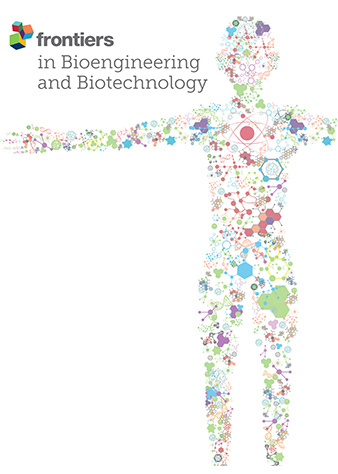Prussian blue nanotechnology in the treatment of spinal cord injury: application and challenges
IF 4.3
3区 工程技术
Q1 BIOTECHNOLOGY & APPLIED MICROBIOLOGY
引用次数: 0
Abstract
Spinal cord injury (SCI) is a serious neurological condition that currently lacks effective treatments, placing a heavy burden on both patients and society. Prussian blue nanoparticles exhibit great potential for treating spinal cord injuries due to their excellent physicochemical properties and biocompatibility. These nanoparticles have strong anti-inflammatory and antioxidant capabilities, effectively scavenge free radicals, and reduce oxidative stress damage to cells. Prussian blue nanotechnology shows broad application potential in drug delivery, bioimaging, cancer therapy, anti-inflammatory and oxidative stress treatment, and biosensors. This article reviewed the potential applications of Prussian blue nanotechnology in treating spinal cord injuries, explored the challenges and solutions associated with its application, and discussed the future prospects of this technology in SCI treatment.治疗脊髓损伤的普鲁士蓝纳米技术:应用与挑战
脊髓损伤(SCI)是一种严重的神经系统疾病,目前缺乏有效的治疗方法,给患者和社会都带来了沉重的负担。普鲁士蓝纳米粒子因其优异的理化特性和生物相容性,在治疗脊髓损伤方面具有巨大潜力。这些纳米粒子具有很强的抗炎和抗氧化能力,能有效清除自由基,减少氧化应激对细胞的损伤。普鲁士蓝纳米技术在药物输送、生物成像、癌症治疗、抗炎和氧化应激治疗以及生物传感器等方面具有广泛的应用潜力。本文回顾了普鲁士蓝纳米技术在治疗脊髓损伤方面的潜在应用,探讨了与应用相关的挑战和解决方案,并讨论了该技术在脊髓损伤治疗方面的未来前景。
本文章由计算机程序翻译,如有差异,请以英文原文为准。
求助全文
约1分钟内获得全文
求助全文
来源期刊

Frontiers in Bioengineering and Biotechnology
Chemical Engineering-Bioengineering
CiteScore
8.30
自引率
5.30%
发文量
2270
审稿时长
12 weeks
期刊介绍:
The translation of new discoveries in medicine to clinical routine has never been easy. During the second half of the last century, thanks to the progress in chemistry, biochemistry and pharmacology, we have seen the development and the application of a large number of drugs and devices aimed at the treatment of symptoms, blocking unwanted pathways and, in the case of infectious diseases, fighting the micro-organisms responsible. However, we are facing, today, a dramatic change in the therapeutic approach to pathologies and diseases. Indeed, the challenge of the present and the next decade is to fully restore the physiological status of the diseased organism and to completely regenerate tissue and organs when they are so seriously affected that treatments cannot be limited to the repression of symptoms or to the repair of damage. This is being made possible thanks to the major developments made in basic cell and molecular biology, including stem cell science, growth factor delivery, gene isolation and transfection, the advances in bioengineering and nanotechnology, including development of new biomaterials, biofabrication technologies and use of bioreactors, and the big improvements in diagnostic tools and imaging of cells, tissues and organs.
In today`s world, an enhancement of communication between multidisciplinary experts, together with the promotion of joint projects and close collaborations among scientists, engineers, industry people, regulatory agencies and physicians are absolute requirements for the success of any attempt to develop and clinically apply a new biological therapy or an innovative device involving the collective use of biomaterials, cells and/or bioactive molecules. “Frontiers in Bioengineering and Biotechnology” aspires to be a forum for all people involved in the process by bridging the gap too often existing between a discovery in the basic sciences and its clinical application.
 求助内容:
求助内容: 应助结果提醒方式:
应助结果提醒方式:


